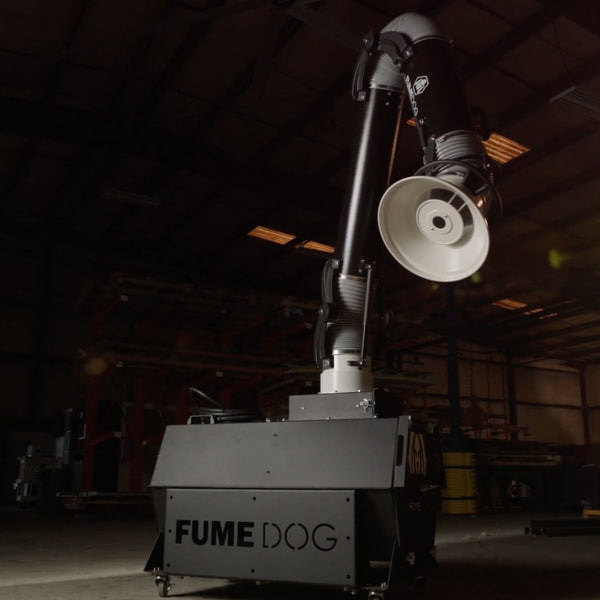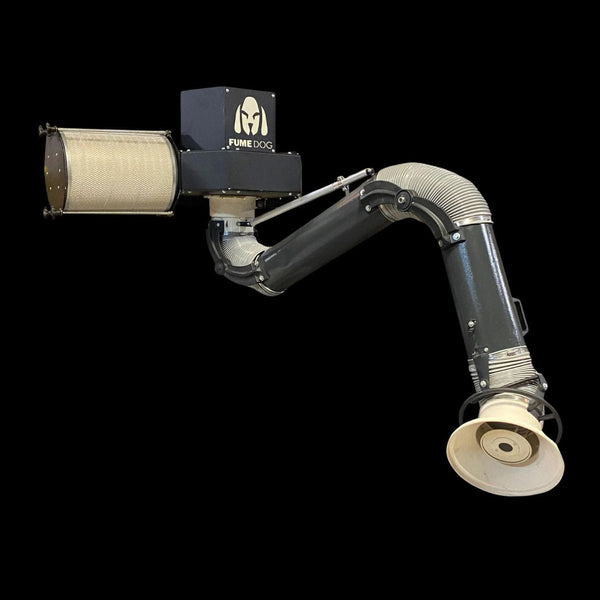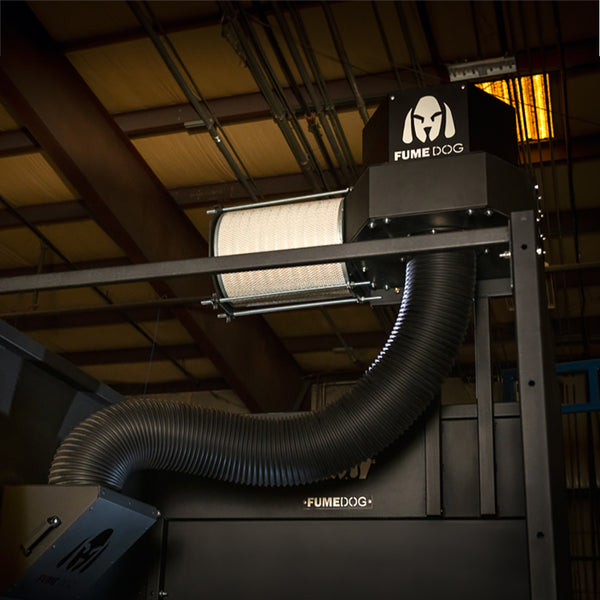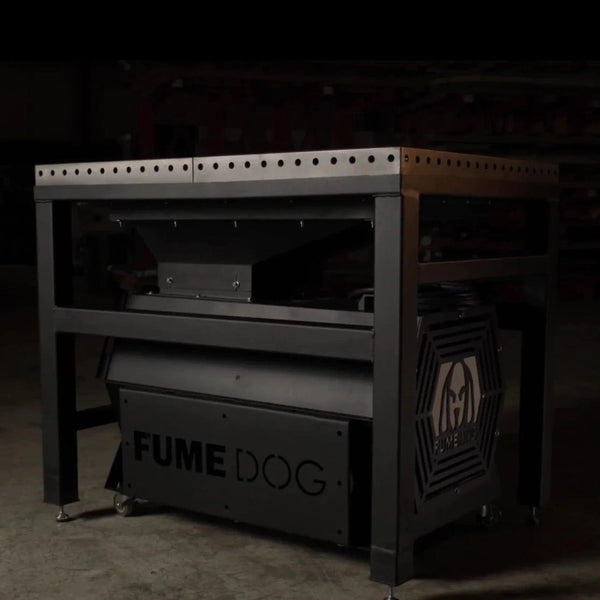
If you’re a welder, it’s very important to know that breathing in welding fumes can harm your health and lead to metal fume fever. This illness, often called “Monday Morning Fever,” comes from inhaling toxic zinc oxide fumes during welding or cutting.
On this page, you’ll learn how to prevent metal fume fever with simple steps and the right protective gear. Protect yourself and keep reading!
Key Takeaways
-
Use proper ventilation systems to reduce toxic metal fumes during welding or cutting tasks.
-
Wear NIOSH-approved respirators to protect against harmful particles like zinc oxide.
-
Adjust welding equipment settings to minimize fume production and improve air quality.
-
Train workers on safety protocols, symptoms of metal fume fever, and protective measures.
-
Inspect personal protective gear regularly and replace damaged equipment immediately.
What Is Metal Fume Fever?

Metal fume fever is a short-term illness caused by inhaling toxic metal fumes during welding or cutting. Many welders experience flu-like symptoms after exposure to certain metals at high temperatures.
Causes and Common Sources
High temperatures in welding operations create metal fumes as materials like galvanized steel and other metals are heated. Inhaling fumes generated from zinc, iron oxide, or heavy metals during processes like manual welding and laser cutting contributes to occupational exposure.
Welding processes involving toxic substances release harmful fumes into the breathing zone. Fume concentrations increase without adequate ventilation, exposing professional welders to airborne contaminants that cause flu-like symptoms or "Monday fever.
Symptoms and Duration
The metal fume fever symptoms often mimic flu-like conditions. For example, workers may experience chills, fever, fatigue, and body aches. A metallic taste in the mouth is also common and can appear quickly after exposure to toxic fumes. Some also report a burning sensation in the throat or chest along with nausea. Symptoms usually worsen several hours after exposure.
Thankfully, most cases resolve within 24 to 48 hours if workers avoid further contact with harmful metalworking fumes like zinc or other metallic oxides. However, continuous exposure can prolong recovery and risk more severe occupational illnesses like welder's cough or zinc shakes.
Always seek medical attention for proper diagnosis of metal fume fever to ensure no long-term damage occurs.
How to Prevent Metal Fume Fever

It’s imperative that you protect yourself from metal fume fever by using methods that reduce harmful fume exposure. Take the following steps to create cleaner, safer welding environments.
Use of Proper Ventilation Systems
It should go without saying that it’s very important to install effective fume extraction systems in welding areas to disperse fumes and reduce exposure. Proper ventilation lowers fume exposure levels, protecting workers from highly toxic substances like metal oxide.
Fume extractors near weld pools capture various other metal fumes before they spread. Better still, systems with adjustable power settings can further eliminate heavy metals by producing fewer fumes during the process.
Wear Approved Respiratory Protection
Protective equipment, like respiratory protective devices, shields workers from harmful welding fumes. Use respirators approved by NIOSH to filter toxic particles and chemical content, as this will prevent exposure to metals, which would otherwise cause flu-like symptoms or welding shivers.
Choose the right respiratory protection for each task, especially with fume generation in processes like MIG or robotic welding. Always check respirators for proper fit and function before use.
Follow Safe Welding and Cutting Practices
Remember to adjust power settings on welding equipment to produce fewer fumes. Low-voltage settings can help minimize the release of toxic particles, and you can also make use of other processes that create less toxic fumes, such as MIG welding with proper fume extraction systems.
Position welding screens correctly to protect workers nearby from harmful exposure and ensure the work area remains free of clutter to avoid accidents during cutting or welding tasks. Most importantly, always ensure ventilation systems operate effectively during these procedures.
Maintain and Inspect Protective Equipment
It’s your responsibility to inspect personal protective equipment regularly for damage or wear. Replace any respiratory protective equipment immediately if it shows any signs of failing to seal properly. You’ll also need to clean welding helmets, gloves, and other gear after each use. Ensure all appropriate protective equipment meets safety standards before starting work.
Workplace Safety Measures
If you have welders working under your wing, it’s your job to train them regularly and enforce strict safety protocols to create a safer welding environment.
Training and Education Requirements
Firstly, train workers on the hazards of metal fume fever before tasks like welding or cutting. Educate them about flu-like symptoms such as fever, chills, and increased white blood cell count to ensure early diagnosis of metal fume fever.
For extra safety, consider organizing safety workshops focused on proper ventilation systems and approved respiratory protection use. Explain the risks from processes like adjusting power settings in confined spaces, and make the sessions practical by covering real-life scenarios common in the welding industry.
Implementing Safety Protocols
Enforcing safety protocols greatly reduces the risks tied to welding fumes. Proper training helps workers identify hazards like metal fume fever and brass founders' ague. Clear guidelines ensure safe practices during cutting, grinding, and other processes.
We’d recommend creating a checklist for daily inspections of ventilation systems and fume extraction MIG guns. Supervisors should monitor equipment functionality to prevent failures. Regular assessments help maintain compliance with health standards, protecting the welding community from flu-like symptoms caused by toxic metal exposure.
Regular Health Monitoring for Workers
Last but most importantly, you’ll need to conduct regular checkups on your workers to detect early signs of metal fume fever. Track flu-like symptoms, such as chills, fever, or fatigue, as diagnosing metal fume fever early prevents severe health complications. Remember to also train your workers to report symptoms immediately for faster intervention.
Conclusion
Overall, preventing metal fume fever starts with proper safety measures. Inspect your equipment often and follow safe work practices, and protect yourself and your workers’ health while staying productive on the job. Most importantly, use reliable ventilation systems like those from Fume Dog, and wear approved respiratory protection every time you weld or cut.
FAQS
What is metal fume fever, and how can I prevent it?
Metal fume fever is a short-term illness caused by inhaling fine metal fumes, often from welding galvanized steel. To prevent it, always use proper ventilation, wear protective equipment, and avoid inhaling smoke from heated metals.
What are the primary causes of metal fume fever?
The primary cause is exposure to zinc oxide, commonly released when welding galvanized metal. Lack of proper ventilation and protective gear significantly increases the risk.
How can I protect myself from welding fumes during work?
Use a fume extractor near the welding source, ensure adequate ventilation, and wear a certified respirator. These steps greatly reduce exposure to welding fumes and protect your respiratory health.
Are certain welding processes more likely to cause fume fever?
Yes, some welding processes, like arc welding and oxy-fuel welding, produce more metal fumes than others. Choosing the right method and using effective fume extraction can lower your risk.
How important is it to train workers about fume risks?
Very. Training workers helps them recognize hazards, use equipment properly, and follow safety protocols to prevent fume fever and other related illnesses.
What role does the welding community play in safety?
The welding community promotes awareness, shares best practices, and encourages safer work environments. So, stay informed through peers and experts to help reduce the risk of metal fume fever across the industry.
